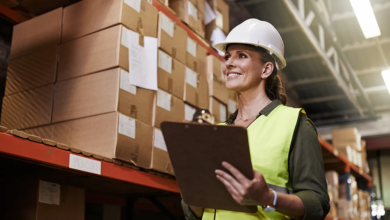How to Prepare Packages for Long-Distance Delivery

Shipping long distances is more than putting items in a box and sealing it. Whether you’re sending goods across the country or to Alaska, proper packaging ensures your shipment arrives on time and in good condition. Harsh weather, long transit times, and frequent handling can all put your package at risk, so careful preparation is key. Here’s a guide to packing for long-distance deliveries with care and efficiency.
1. Choose the Right Packaging Materials
Successful long-distance shipping starts with the right packaging. Sturdy corrugated boxes work well for most items, while double-boxing adds extra protection for fragile ones. Use high-quality packing tape—skip household tape—to securely seal your package. Reinforce seams and edges to minimize the risk of the box opening during transit, ensuring safe delivery.
2. Protect Items with Adequate Cushioning
The longer the journey, the higher the risk of your package encountering bumps, drops, or shifts during transit. To safeguard your items, use cushioning materials like bubble wrap, foam inserts, or packing peanuts to absorb shocks and minimize damage. Wrap each item individually, especially when shipping multiple pieces in the same box. Be sure to fill any empty spaces to prevent movement, as shifting contents can lead to scratches, cracks, or breakage.
3. Label Clearly and Correctly
A clear and legible label is essential to ensure your package arrives at its destination on time. Opt for waterproof markers or printed labels to prevent smudging during transit. Be sure to include the recipient’s full name, address, and contact details, along with your return address. When shipping to remote locations, such as Alaska, double-check the address for accuracy, as some areas may have limited delivery routes.
4. Consider Weather and Climate Conditions
Long-distance deliveries often face diverse climate conditions that can impact your shipment’s quality. For instance, Alaska’s colder temperatures may affect specific items. To ensure temperature-sensitive products like electronics or perishables remain intact, consider using insulated packaging or cold packs to preserve their quality throughout transit. Additionally, water-resistant wrapping is essential to shield your shipment from snow, rain, or condensation.
5. Secure Fragile or Valuable Items
When shipping fragile items, label the package clearly with “Fragile” or “Handle with Care” stickers. While this doesn’t guarantee careful handling, it signals shipping staff to exercise extra caution. For valuable goods, consider using tamper-evident seals or discreet packaging to protect the contents. For high-value shipments, requesting delivery confirmation or purchasing insurance can provide added security and peace of mind.
6. Measure and Weigh Accurately
Accurate weight and dimensions are essential for calculating shipping costs and ensuring your package is processed smoothly. Underestimating these details can result in unexpected fees or delays if the carrier needs to reprocess your shipment. To avoid surprises, always weigh your package after it’s fully packed and measure its length, width, and height with care. Proper preparation ensures a hassle-free shipping experience.
7. Plan for Longer Transit Times
Shipping to Alaska or other long-distance locations can take longer than standard domestic deliveries due to factors like distance, weather conditions, and transportation schedules. If your shipment is time-sensitive, it’s essential to account for potential delays when setting delivery expectations. To avoid disappointment, consider sending your package well in advance to ensure it arrives on time, even if unexpected issues arise.
8. Keep Tracking Information Handy
After your package is shipped, be sure to save the tracking number to monitor its journey. Tracking allows you to stay updated on estimated delivery dates and any potential delays. In case of an issue, having the tracking details on hand ensures a smoother process when reaching out to the carrier for support.
Read Also: Techoelitecom: Exploring the Tech Elite
Conclusion
Preparing properly is essential for successful long-distance deliveries. Every detail matters—from selecting the right packaging materials and accounting for weather conditions to ensuring accurate labeling. These steps are crucial to guarantee your package arrives in perfect condition. Whether you’re shipping a gift, business products, or important documents, investing time in careful preparation ensures a smoother, more reliable shipping process, even for destinations as far as Alaska.




